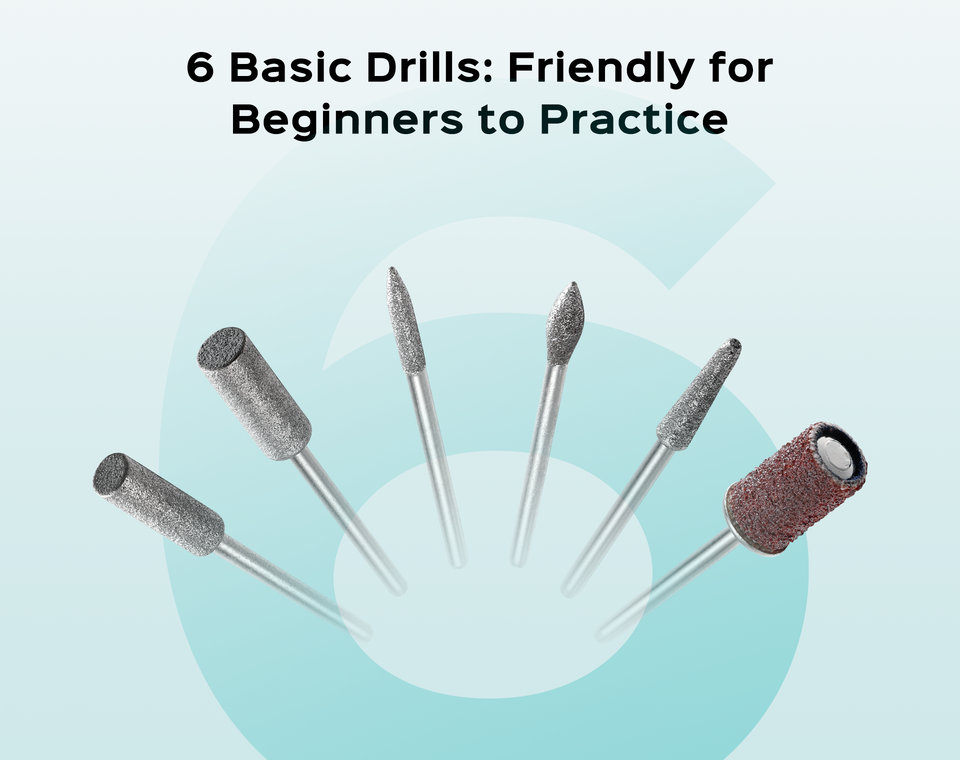Unleash Your Nail Game: Discover the Magic of Electric Nail Files!
In the ever-evolving world of beauty and self-care, electric nail files have surged in popularity, becoming a staple in nail care routines. Gone are the days of relying solely on traditional manual filing methods; electric nail files have transformed the way we approach nail maintenance. These innovative tools not only save time but also offer a level of precision that can elevate any manicure or pedicure. Whether you're a professional nail technician or a DIY enthusiast, understanding the benefits and features of electric nail files can enhance your nail game dramatically. This article will delve into the intricacies of electric nail files, providing insights on their features, benefits, and the best practices for their use.

Understanding Electric Nail Files
Electric nail files, often referred to as e-files, are power tools designed for shaping and smoothing nails. Unlike traditional manual nail files that require repetitive hand movement, electric nail files use a rotating head to quickly and efficiently file the nail surface. They come in various types, including portable handheld models for home use and more advanced salon-grade options. The core difference lies in their mechanism; while manual files rely on user effort, electric files are powered by a motor, allowing for greater speed and consistency in nail shaping. Their popularity has soared due to their versatility—catering to natural nails, acrylics, and gel nails alike. Understanding the different types and how they operate is crucial for anyone looking to upgrade their nail care routine.
Features of Electric Nail Files
Electric nail files boast several key features that greatly enhance user experience. One of the most significant features is adjustable speed settings, allowing users to choose the right speed depending on the task at hand, whether it's shaping, buffing, or polishing nails. Additionally, these files often come with various attachments, such as sanding bands, fine polishing bits, and cuticle pushers, each designed for specific nail care tasks. This versatility makes them suitable for both beginners and seasoned nail technicians. Ergonomics is another critical aspect; many electric nail files are designed to fit comfortably in the hand, reducing strain during use. Together, these features create a user-friendly experience that can transform nail care into an enjoyable and efficient process.
Benefits of Using Electric Nail Files
The advantages of electric nail files are numerous and compelling. For starters, they are incredibly efficient, significantly reducing the time it takes to file and shape nails compared to manual methods. This efficiency is especially beneficial for professionals who handle multiple clients in a day. Precision is another major benefit; electric files allow for a controlled filing process, which can lead to cleaner lines and smoother finishes. Moreover, using electric files can improve nail health. Traditional filing techniques often create micro-tears in the nail surface, leading to damage and splitting. In contrast, electric files can minimize this risk when used correctly, promoting healthier nails. A friend of mine, who is a nail technician, swears by her electric file, claiming it has transformed her practice and provided her clients with a better outcome.
How to Use Electric Nail Files Safely and Effectively
Using electric nail files safely and effectively requires a bit of knowledge and practice. First, always start with clean, dry nails and ensure your electric file is in good working condition. Begin by selecting the appropriate attachment for your task—sanding bands for shaping, and finer bits for polishing. Once you're set up, hold the file at a 45-degree angle to the nail, applying gentle pressure and allowing the tool to do the work. It’s crucial to avoid pressing too hard, which can cause damage to the nail bed. For safety, keep the file moving to prevent overheating any one area of the nail. After use, clean your attachments and store the device properly to maintain its longevity. My friend once had a mishap with overheating her file, which taught her the importance of following these safety tips to prevent any accidents.
Maximizing Your Nail Care with Electric Nail Files
Electric nail files represent a significant advancement in nail care technology, offering unparalleled efficiency and precision that traditional filing methods simply cannot match. With features designed for ease of use and various benefits that promote nail health, they are an invaluable tool for anyone serious about their nail care routine. Whether you are a professional in the beauty industry or simply looking to enhance your at-home manicure experiences, integrating an electric nail file into your regimen can lead to impressive results. So why not take the plunge and experience the magic of electric nail files for yourself?








